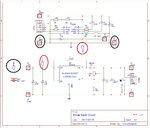Hunter666_444
Newbie level 4

Hello y'all
I want to make a power-bank PCB and I really can't find any good schematics so please if anyone has any leads and this is my 3rd PCB ever if there is any notes or advice I really appreciate it
Thanks in advance :-D,
I want to make a power-bank PCB and I really can't find any good schematics so please if anyone has any leads and this is my 3rd PCB ever if there is any notes or advice I really appreciate it
Thanks in advance :-D,

